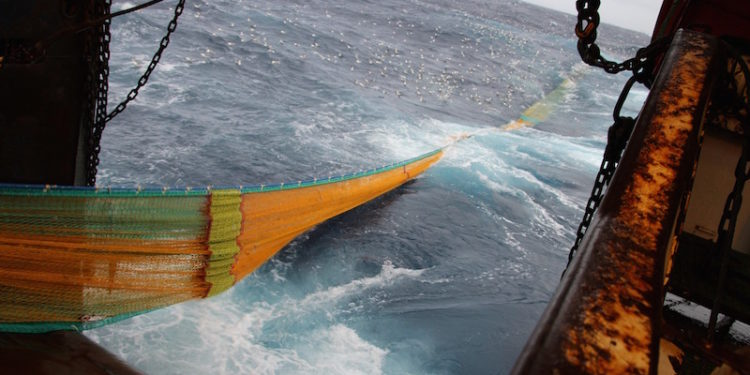According to Vónin sales manager Søren Havmand, the company’s specially developed Fortis netting was first used to meet specific requirements for some Norwegian trawlers.
‘The first was Atlantic Star. They wanted larger gear, but it couldn’t be any heavier than the gear they were using. Fortis netting was very new then, so we decided to try it and the results were better than we had expected. Then the owners of Ole Arvid Nergård came to us as they wanted to tow twin-rig gear, but it it had to be no heavier than the single rig they were used to working,’ he said.
‘We didn’t say too much to start with, but when we saw customers coming back for more, that’s when we knew we could be confident.‘
The next step was to transfer the experience of Fortis from groundfish to shrimp gear and Fortis has really come into its own in the small-mesh Barents Sea shrimp trawls
‘There is a lot of resistance in these, so we wanted to try Fortis to reduce the drag and it worked well, so at the beginning of this year we set up trawls for Greenland trawler Akamalik for fishing in the Barents Sea,’ he said.
‘The skipper wanted a big spread, so he has two 3600 mesh trawls on 80 metre footropes and have been fishing very well with this gear and Storm trawl doors. If you want to use smaller doors with spread and also height, you have to use better materials, which is where Fortis has made the difference.’
‘Akamalik’s trawls provide a 150 metre spread with 15 square metre doors, and they also have a 14-15 metre height, which is exceptional,’ he said.
In addition to the orders from Norway, Vónin’s net loft has been busy with shrimp gear for Russian and Greenlandic customers, as well as for a Canadian trawler wanting both twin-rig shrimp and Greenland halibut trawl gear, all made in Fortis netting, with around sixty trawlers now using Fortis gear.
As well as the trawls, Vónin also supplies its own grids, made in plastic that does not twist and rigged in a trawl section to ensure that the angle remains stable. The grids have cross bars that are set back behind the vertical bars, so there is no junction where shrimp can become trapped, leading to the grid becoming clogged.









